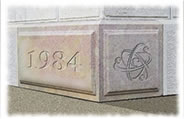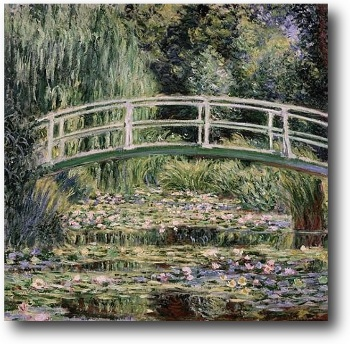The Unseen Power of Transitions
“And We’re back!”
-Johnny Carson
American Television Personality and Entertainer
Host of “The Tonight Show” for thirty years
(1925 – 2005)
And we’re back, from a relished break; borrowing Johnny Carson’s standard “back from commercial” phrase.
Today’s Subject:
Transitions: The Bridges and Road Signs of the Presentation
It’s True! You can’t get there from heeah… Well, you can’t get to the next part of the presentation without quitting this part first! And doing that without the use of transitional phrases is a tough gig — runs the risk of leaving the audience unclear about “where they’re at” in the presentation. So two questions present themselves:
“How do I quit this part?” and, “How do I start the next?” The answer to both questions, “With a transition!”
Let’s break out the discussion into two parts:
First: Are there different types of transitions? If so, What are they?
Second: Are there qualitative differences in transitions? If so, How So?
Types of Transitions:
Verbal, Visual and Kinesthetic (the Sounds, Signs and Feelings that signal a transition)
Verbal:
The word or phrase which signals the end of what we’re discussing, and the beginning of what comes next. It’s a double task: signal the end of what’s under discussion and mark the entrance into what’s next! It might sound like this: “OK, are we done with A? Yes! All right, let’s move on to B!”
In our experience, not every movement through the presentation requires such a detailed solution, but it’s good to know the process when you encounter something which requires a little sophistication.
Sometimes a single word can do the trick: “Next?!” Before naming the upcoming area of discussion.
We won’t print a list of transitional words or phrases here, because your own imagination is a rich source of ways to stop and start discussions — and better yet, they will be uniquely yours! Don’t hesitate to do it your way when driving/escorting your audience around your “personal presentation campus.” But be careful. Style can earn points, or lose them.
Visual:
What’s with the Monet Bridge?
(Hint: it might be a visual transition signal, then again it might suggest a particular “character or quality” of transition…)
Monet’s painting of the bridge in his garden at Giverny is certainly a bridge — as all transitions are… But it is also indicative of a certain languid, leisurely quality of movement. After all, one wouldn’t run across such a bridge; one might instead — mosey, wander or stroll. So transitions, like bridges, can exhibit or even call forth a certain quality, pace, attitude or character. The Mighty Carson “And We’re Back!” phrase was obviously a verbal transition; and it wasn’t the least bit leisurely! All by way of featuring the host’s casual, quick style — in a single phrase. Talk about unseen power!
So pictures, props, costumes, demonstrations and handouts are all variations on the visual transitions genre. Think about teaming a visual transition with a verbal one — for double the impact.
OK, we admit it: we snuck the “quality discussion” into this text completely out of order — so you can see how easy it is to get yourself in trouble if you don’t respect the audience’s need to know at all times “where they are” in the presentation. Tell ’em the agenda, then stick to it, and walk them through the items using transitions to mark the sectional starts and stops along the way — or they get confused. Which isn’t fun; is it?
Back to our plan then: You are here! We’ve discussed Verbal Transitions, Qualitative differences in Transitions, and Visual Transitions as well. What next?
What about the Physical or Kinesthetic side?
A lot of speakers are a little bit “tied” to the reading stand or lectern — which can have a very limiting effect on the presentation. After all, if most of the speaker is hidden from view, the remaining parts in view have to do a lot more work. Consider that it’s hard to like someone who appears to be nothing more than a “talking head, perched on a platform.”
With the advent of the “lavalier” or portable/wireless microphone, we’ve been released from the tether to home base! So take your iPad notes and screen controller with you and move around the stage — pausing every so often for a glance at your materials. As a matter of fact, consider that lectern as a place to launch from and then return to as you commence concluding. Those physical movements around the stage keep the audience focused and allow you to emphasize when you start, finish and move from one area to the next. One caution: Don’t stay in perpetual motion — we can’t handle that. So move when there’s a transition, and stay in place as you work through a module or a subject.
Well, there you have it.
Transitions aren’t paid their fair share of attention. But failing to give them their due leaves the audience wondering where they are in the presentation and you without the tools to help them find their way.
Applications:
1. Individually
One challenge of contemporary life is that it comes at you so continuously and so darned hard! Life Transitions can be helpful in mitigating stress as we will show…
In our experience, when a seminar concludes, there’s a tremendous drop off of energy — unless we’ve foreseen the end of this project cycle, and the transition to “the cleanup and close up.” When that’s done, there’s the very special “Get up to the room for a hot bath and a burger” cycle. And as that concludes, the “Falling into bed” process begins. So getting through the day, and surviving it; has a lot to do with breaking the long slog into distinct parts by installing the mental transitions (bridges) that allow you to “locate yourself” as you negotiate the slings and arrows of outrageous life.
2. At Home
Kids are at it all the time, and they have a hard time negotiating the torrid pace of everyday life too. Help them by breaking up the day or the task into chunks: “First we’re going to untie our shoes. Then, we’re going to take them off. Finally, we’re going to put them in the closet. Wow! Look what we accomplished!”
It’s a little “Mr. Rogers,” but that may not be a bad thing. If they learn these skills at home, they’re going to be ahead of the others at school. Of course, it’s OK to teach them these communication techniques too!
3. At the Office
Here’s where the studied use of transitions can really set you apart from the crowd. The opening is a transition: it starts the thing off. And the default standard is no opening at all, or worse, the failed attempt at humor; the bar is set pretty low. You can do better! Pick an opening — a story perhaps — which can be developed into a theme which will carry through and connect the agenda topics and the main idea. A little extra attention to transitions can set up your transition to management.
And We’re Back! We’ve missed you! It’s a new year! Drop us a line. All questions and Cornerstones requests will be graciously considered! Hey, you might win a hat…
Subscribe to our Newsletter
« Back to Blog

